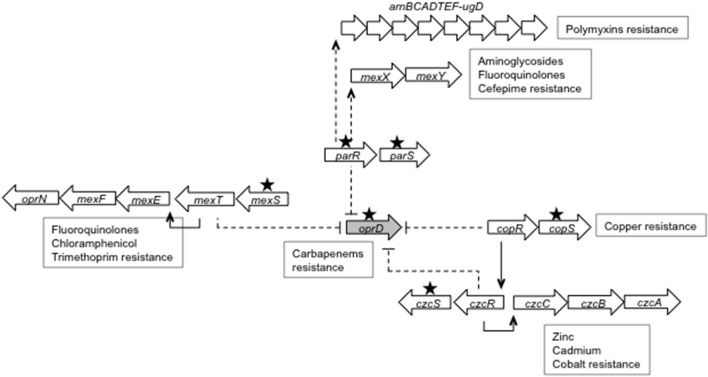Figure 1.
Schematic representation of genes involved in down-regulation of gene oprD in veterinary P. aeruginosa strains. The oprD gene is repressed by mutations (represented by black stars) activating the two-component systems ParRS (in genes parR, parS), CopRS (in gene copS) and CzcRS (in gene czcS), respectively. While induction of operon mexXY expression by ParRS leads to a higher resistance to aminoglycosides, fluoroquinolones and cefepime, activation of CopRS or CzcRS results in an increased resistance to metal ions. In addition, ParRS-dependent positive control of LPS modification operon arnBCADTEF-ugd is responsible for a low resistance to polymyxins. Defective porin OprD production and carbapenem resistance may also arise when the LysR-type regulator MexT is activated following alteration of the gene encoding putative oxidoreductase MexS. Gene mexS mutants are characterized by an increased resistance to fluoroquinolones, trimethoprim, and chloramphenicol as a result of operon mexEF-oprN overexpression.

